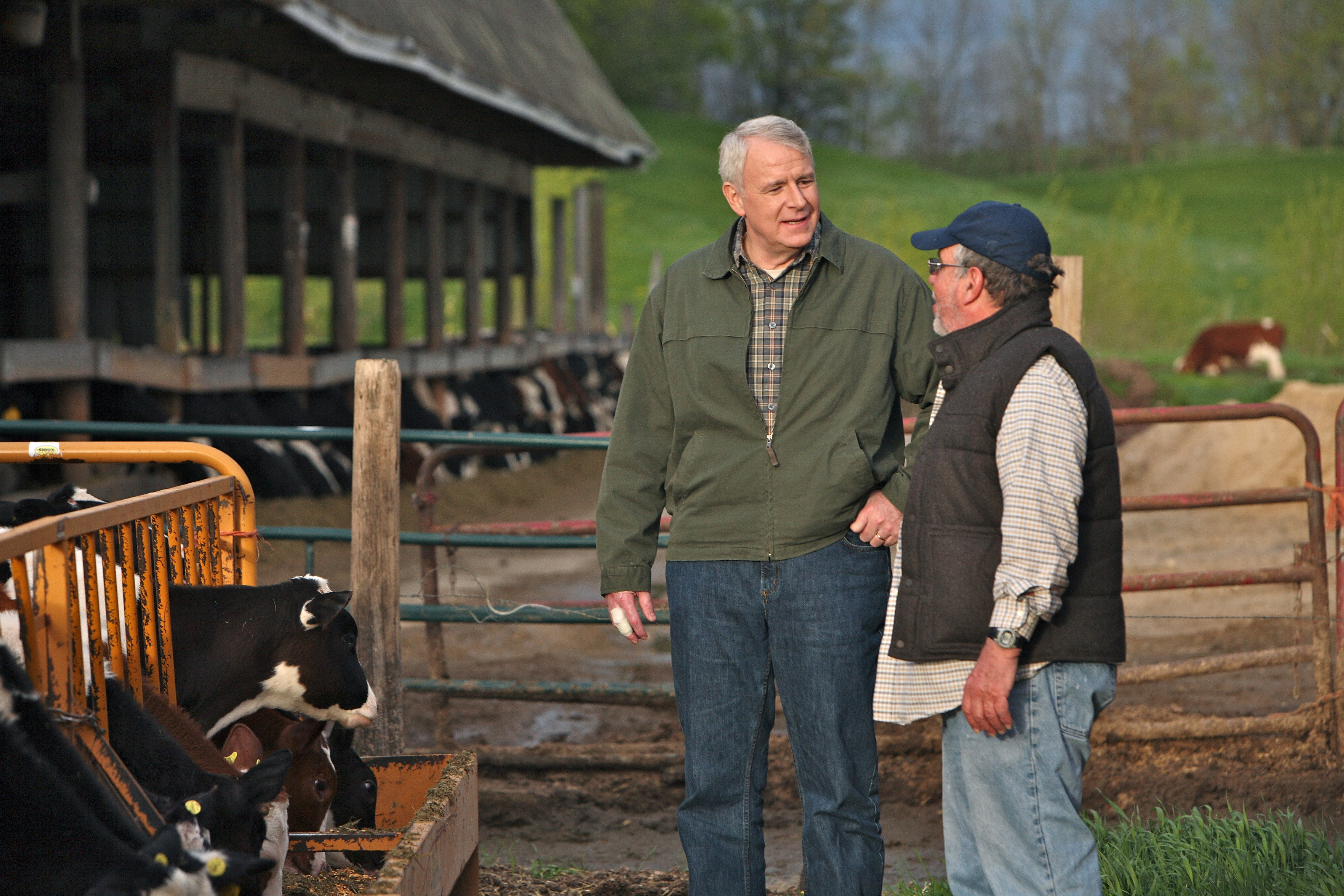There’s no doubting it: big data is here to stay. As the technology continues to revolutionize the ag industry, players from across the business are making moves to integrate data-driven technologies along every step of the supply chain.
Recently, member-owned agricultural cooperative Land O’Lakes and its ag products subsidiary WinField launched a new partnership with Google and Cloud Technology Partners to create the WinField Data Silo, a data storage platform for farmers. Land O’Lakes, which is a household name for products like butter, cheese, and other dairy products as well as Purina brand pet foods, is hoping to assist farmers with making better decisions on the farm, and it’s no stranger to agtech. In 2003 it acquired Geosys, the French satellite imaging company, and oversaw Geosys’s recent partnership with weather station manufacturer Pessl Instruments. Through WinField it has also developed a web-based decision-making tool, The R7 Tool, which features Geosys’ remote sensing maps.
Once Land O’Lakes selected Google to provide the cloud support platform for the data storage service, it crafted a prototype. Over the next eight months, it calibrated and tweaked the platform with Google’s assistance and guidance. Starting in May 2016, the company began helping its 1,300 members upload their data onto the platform.
The Minnesota-based company is also working with non-profit ag business consortium AgGateway on data standardization; to create a universal language for the data that will allow it to be used collaboratively with a wide variety of platforms, tools, and services.
Why is this universality so critical? Data has helped farmers take perhaps the deepest field-level look into their operations to date. With all that data, however, can come some serious headaches. To make the most of the mountains of data that are flooding farmers’ hard drives, they need to be able to access the data, manipulate it in different ways, and apply it to a variety of systems with ease.
When data is siloed in different formats or locations, it’s about as useful to a farmer as a tractor without an engine.
WinField is no stranger to juggling multiple data sets and maximizing their usefulness. It boasts roughly 200 research farms that test seed hybrids and provide demos for crop input products. The company has been aggregating data from these test fields for multiple years. Finding a central place to store all that data was a top priority and something that has major appeal to the new breed of farmers who are hungry for data.
The partnership made privacy a priority when designing the platform, having allied their efforts with some open-source data initiatives including the Open Ag Data Alliance.
“We are excited to roll out this technology to our member-owners, but we are also very much concerned with data privacy,” Teddy Bekele, vice president of IT at Land O’Lakes/WinField recently told AgFunderNews in an email Q&A. “We will ensure the information loaded in the platform is securely stored and only accessible with the right permissions.”
The platform allows users to designate permissions for the data, sending it automatically to the intended recipients instead of requiring the farmer to manually transfer the data.
We had the chance to ask Bekele a few more questions about the origins of the WinField Data Silo.
How did the idea for this technology come about?
Our customers — retailers and farmers — are continuing to leverage more technology on the farm to improve decision making. However, it is difficult to leverage data from more than one platform, as they are all disconnected from one another. That is why we developed the WinField Data Silo because we want our customers to make the most of the tools available in the marketplace.
Why is it well suited for Land O’Lakes?
We are a member-owned cooperative, and we felt it was our responsibility to solve this problem for our owners. The cloud gave us the flexibility to test various ideas quickly before getting to the final solution. The cloud also gives us the ability to scale the platform as more data is ingested.
Are there any other technologies like this on the market?
There are platforms in the market trying to solve the connectivity problem by integrating with one another. However, I have not seen anything yet that acts a central repository for agronomic data.
Tell us more about managing the geospatial shape files of farm fields. Is that new technology?
This is not new technology. Most agronomic tools have a GIS (Geographic Information System) component.
As a farmer or an agronomist works on a field or given fields, the information gathered is typically geo-spatial. For example, tissue sampling in a specific spot in the field, writing a seeding prescription within the confines of a field boundary, or analyzing a satellite image of an area within a field.
As the data is aggregated into a single repository, a farmer or an agronomist will want to geospatially analyze the insight gathered by these tools. For example, do I have more yield in a particular area of the field because the collected soil samples tell me that I have better soil in a specific zone?
What aspects of the Data Silo allow connectivity between farmers and retailers, or other aspects of the supply chain beyond the farm?
We are building the Data Silo with a number of APIs to allow connectivity among various tools. This will enable information gathered by one tool to be transmitted to another so better insights can be generated.
How do you see this technology expanding during the coming years?
As more agronomists and farmers adopt this technology and populate the Data Silo with more data, we will increase the effectiveness of the precision ag tools in the market. Also, we can start to apply data science technologies so we can find patterns and trends within regions, across various climate conditions and farming practices.
Have news or tips? Email [email protected].




